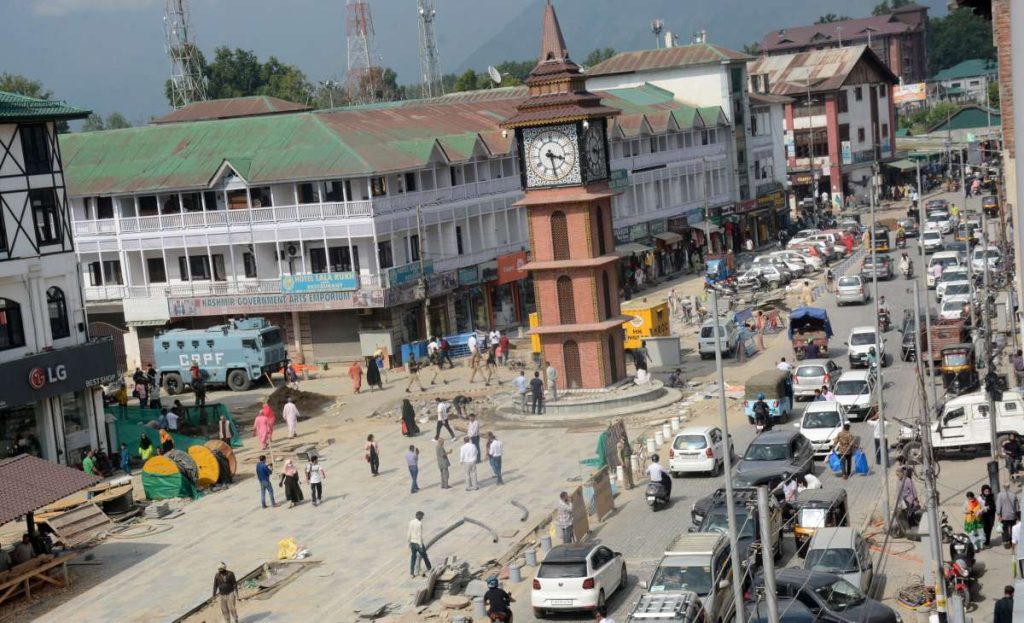
Despite being a late entrant to digitization, J&K has already become the first Union Territory (UT) in India to completely switch to a digital method of administration, with all government and administrative services now ‘only’ provided online. With emphasis on open and accountable governance, around 450 services currently offered are helping optimize public service delivery and bringing transparency to the system. A special feature on the the Remarkable Digital Transformation Unfolding in Jammu and Kashmir
With India’s digital revolution underway, with both pace and momentum sustained, every corner of the country continues to witness digital transformation for improved governance, service delivery and economic development. This includes the Union Territory of Jammu & Kashmir (J&K), which can now benefit from these much-needed changes since the abrogation of Article 370.
Although geopolitical circumstances and security concerns have affected the pace and scope of digital transformation initiatives in the region, remarkable strides have been made in a very significantly short time. The J&K administration has set up a roadmap and action plan for the next 5 years, highlighting, “Line to online is our prime objective and instead of travelling to government offices, people just need to walk to the web. Our strategy is to enable people to access high-quality services anywhere, anytime, on any device.”
Despite being a late entrant to digitization, J&K has already become the first Union Territory (UT) in India to completely switch to a digital method of administration, with all government and administrative services now ‘only’ provided online. With an emphasis on open and accountable governance, around 450 services currently offered are helping optimize public service delivery and bringing transparency to the system.
J&K has also achieved significant milestones in the healthcare space. In 2022, it was awarded the first prize in the category for Ayushman Bharat Health Account ID generation and stood second in the category for Teleconsultations. For context, the Ayushman Bharat Digital Mission aims to develop the backbone to support integrated digital health infrastructure in India. In line with this, for the first time, QR code-based OPD registration services were launched at 11 leading hospitals in the UT.
For those unaware, over 70% of the UT’s population is engaged in agriculture and livestock-related activities, making it even more imperative for digital projects to permeate across all sectors. As expected, large-scale initiatives are already being taken; for instance, earlier this year, an INR 30.40 crore project on Sensor-based Smart Agriculture was approved to integrate agriculture with Artificial Intelligence (AI) and Internet of the Thing (IoT) to make the sector more cost-effective and competitive.

According to an official statement, “the project would enable the use of hi-tech poly houses for the cultivation of cash crops around the year with the application of IoT and automation for monitoring the microclimatic parameters of plants. The greenhouse technology will result in increased yields and make possible off-season availability of vegetables as early production or late availability as compared to open field conditions.”
Moreover, to revolutionize livestock management, J&K has been chosen for the implementation of the National Digital Livestock Mission, which aims to create a technology-driven, farmer-centric ecosystem by establishing a digital livestock database in the region, improving farmer services, and providing timely information updates. With over 90% of bovines already tagged and registered, the comprehensive integration of data with the database will facilitate better disease monitoring and control, ensuring product traceability, and boosting dairy and livestock exports. In line with the Digital India vision, the e-Gopala app will also enable these farmers to access essential information about their animals and benefit from services such as Direct Benefit Transfer (DBT) and e-RUPI facilities.
The region is also on its journey to strengthen its e-commerce and start-up ecosystems. For instance, the Open Network for Digital Commerce has signed an MoU with the J&K Trade Promotion Organization, which will give small and midsized enterprises easy access to digital commerce, allowing traders, especially those engaged in traditional sectors to reach a wider market and expand their presence. The arts Emporium of Kashmir is also developing a platform for online exchange, and a MoU has been signed with Flipkart to help local artisans to sell their products throughout India.
Among many of the transformations brought about by the abrogation of Article 370, one of them has been a spike in the number of start-ups, with 500+ entities registered in the region so far. J&K also grabbed the top position among all UTs and Northeastern states in the Ranking of States on Support to Startup Ecosystems published by the Union Government. Both public and private entities have started taking notice of the potential the region has to offer, leading to many investment opportunities.
The tourism sector, a major growth driver for the region, is also embracing the advancements technology has to offer to make J&K an international tourist hub. To offer tourists a safe and fulfilling experience, the CoRover Connect app helps connect tourists in a particular location with each other, with administrative staff, and with verified/curated service providers. With increased tourist footfall, the government is determined to make the UT a paradise tourism spot through digital technology. Digital technology benefiting tourism paradise will attract more tourists in the future.
It is astounding to see the progress possible not only with the systemic measures and initiatives taken but also with the acceptance and receptiveness to these measures by the local population. With J&K trying to catch up to the rest of the country, this accelerated rate of progress is likely to persist in the coming future benefiting inhabitants, especially the local youth.


